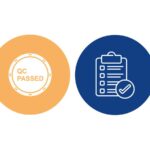Transform Your LMS with Aulasneo: A Journey Beyond Aesthetics!
In the rapidly evolving world of eLearning, the customization of Learning Management Systems (LMS) has become a pivotal concern for educators and institutions aiming to provide impactful and engaging learning experiences. Yet, a common pitfall in these customization projects is the initial focus on aesthetic enhancements over the foundational logic that underpins effective learning experiences. At Aulasneo when developing customizations for the Open edX platform, we’ve charted a different course, emphasizing a strategic, iterative approach to LMS customization that prioritizes functionality and user feedback from the get-go.
The Misdirection of Initial Focus
Many customization projects commence with a heavy emphasis on visual elements and user interface design. While the look and feel of an LMS are undeniably important, starting with these aspects can lead to a misallocation of resources on features that, while visually appealing, may not contribute significantly to the learning experience. This approach often overlooks the core functionalities that truly drive user engagement and educational outcomes.
Aulasneo’s Iterative Approach: The Key to Success
Our strategy at Aulasneo diverges from the conventional path. We advocate for an iterative customization process, which begins with deploying the LMS in its basic, out-of-the-box state. This initial step allows stakeholders to familiarize themselves with the core functionalities of the platform without the distractions of custom features or designs.
Following this, we introduce a pilot phase involving a select group of students. This phase is crucial for gathering genuine feedback on the platform’s usability, effectiveness, and areas needing improvement. Based on this feedback, we then embark on a phased customization process, iteratively implementing changes that directly address the users\’ needs and enhance the learning experience.
Why This Approach Works
Adopting an iterative method for LMS customization has several advantages. It ensures that the development efforts are aligned with the actual needs and preferences of the end-users, thereby enhancing the relevance and impact of the customized features. This approach also allows for the early identification of potential issues, enabling timely adjustments that save resources and avoid the implementation of unnecessary or ineffective features.
Moreover, by involving learners in the customization process, institutions can foster a sense of ownership and engagement among users, further driving the success of the LMS.
Conclusion
In conclusion, while the temptation to prioritize aesthetics in LMS customization is understandable, our experience at Aulasneo underscores the importance of a logic-first, user-centered approach. By adopting an iterative process that values user feedback and functional improvements, educational institutions can achieve a more effective and engaging LMS, tailored to the real-world needs of learners and educators alike.
Contact us to continue this conversation.
Let\’s make your digital education vision a reality.


